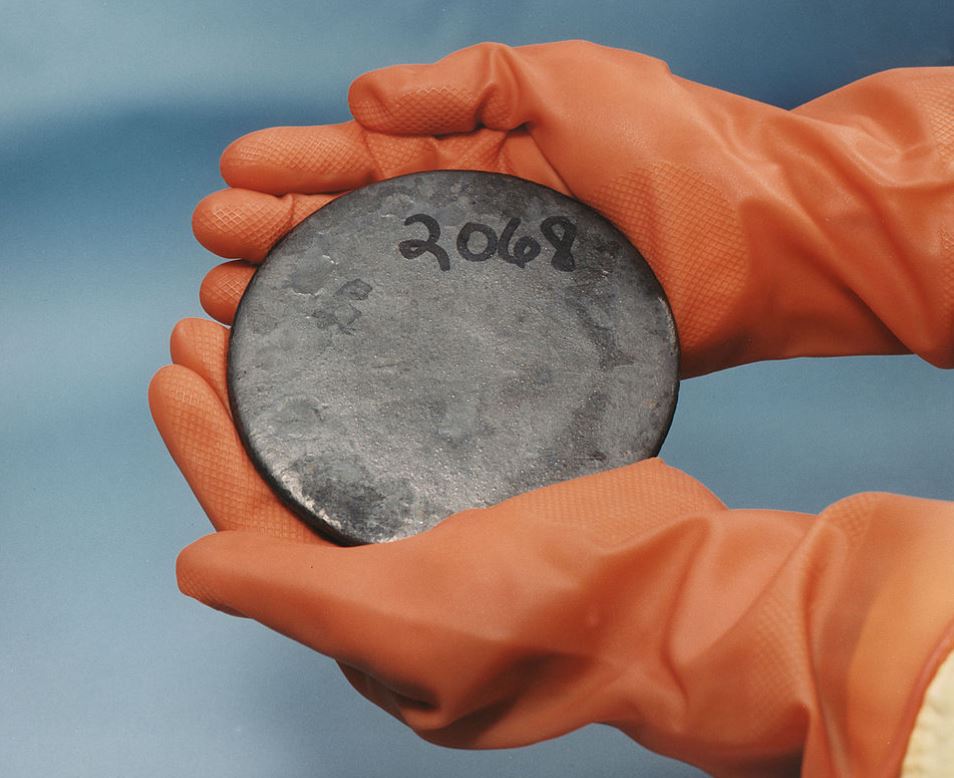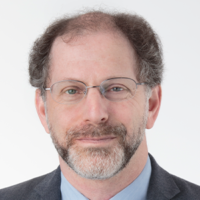Last week I had the opportunity to attend the conference on nuclear security in Vienna sponsored by the International Atomic Energy Agency (IAEA). The conference was enormous, with 2,000 participants from 130 countries. The US official delegation alone had over 100 people. I heard (but have not substantiated) that the ministerial meeting that preceded the technical meeting attracted a larger number of national delegations than any other IAEA conference in its history. By one measure—inclusivity—the conference seems to have been a success.
However, that success came at a price: a reduction of focus on the most serious nuclear threat—the theft of fissile materials (highly-enriched uranium (HEU) and plutonium) that terrorists could use to make improvised nuclear weapons.
The greatest threat: Nuclear-weapon-usable materials

HEU (Source: DOE)
Addressing the threat of theft of these materials was the original purpose of the Nuclear Security Summits that began in 2010 under President Obama and ended in April this year. Countries attending these meetings were encouraged to reduce or eliminate their civil stocks of HEU (and to a more limited extent, plutonium) by shipping them to the US or Russia.
As there is little optimism that the incoming Trump administration will continue a comparable effort, many hope that a successor to these Nuclear Security Summits will continue under the IAEA’s mantle. The conference last week was the first to occur after the final Summit in April, and was regarded as the potential launching point for an enduring successor.
Only a relatively small number of countries possess significant quantities of weapon-usable uranium or plutonium (and the number has decreased as the result of the Nuclear Security Summits). Attendance at the Summits was limited to around 50 states that collectively possess 98% of the world’s civil fissile materials (if Russia, who declined to attend the final Summit in 2016, is included).
Radiological threats
However, many more countries have nuclear power plants and research and test reactors than stocks of fissile materials, and even more have radioactive sources for use in medicine and industrial applications. To get more member states actively involved, the IAEA had to broaden the scope of what it considered “nuclear” security to include what is more commonly referred to as “radiological” security. This would range from preventing the sabotage of nuclear power plants to preventing the theft and dispersal of radioactive sources, encompassing a wide spectrum of radiological consequences.
While the risk of radiological attacks is a significant concern, even the most severe radiological terrorism events would be less devastating than the detonation of a crude nuclear weapon, at least in terms of immediate deaths, injuries, and destruction of infrastructure. To lump all these issues together under the general rubric of “nuclear security” distracts from a focus on the greatest dangers.
Even worse, some nations used this broader agenda to divert attention from their greatest security problems. For instance, the French devoted their ministerial statement largely to radiological source security, and failed to address the risks associated with the large stockpile of plutonium within France, or France’s continuing efforts to promote spent fuel reprocessing (which produces plutonium) around the world.
Different threats need different venues
Nuclear terrorism, nuclear power plant sabotage and malevolent use of radiological sources are very different threats and require different measures to protect against them. Optimally they should be addressed in distinct venues.
On the other hand, the scope of the conference should not be so narrow that it excludes issues that do have an important nexus with fissile material security.
Consider one of the actions announced by the United States in its ministerial declaration at the conference: namely, the commitment to make 6 metric tons of excess plutonium that the United States had previously decided to directly dispose of available to the IAEA for monitoring and inspection. Since IAEA safeguards are not intended to protect material against terrorist theft, but to verify that the owner nation is not misusing the material for nuclear weapons purposes, some attendees questioned the relevance of this announcement to the purpose of the conference.
However, as UCS has long pointed out, direct disposal of excess plutonium poses fewer opportunities for theft than the main alternative approach, converting the plutonium to MOX fuel and using it in nuclear reactors. To the extent that the US declaration strengthens the political legitimacy of the direct disposal option, it will further diminish the prospects for the MOX approach and ultimately will avoid an increase in the risk of theft of US excess plutonium by terrorists. It could also provide a model for other countries, like France and Japan, who have accumulated worthless and dangerous stockpiles of plutonium.
